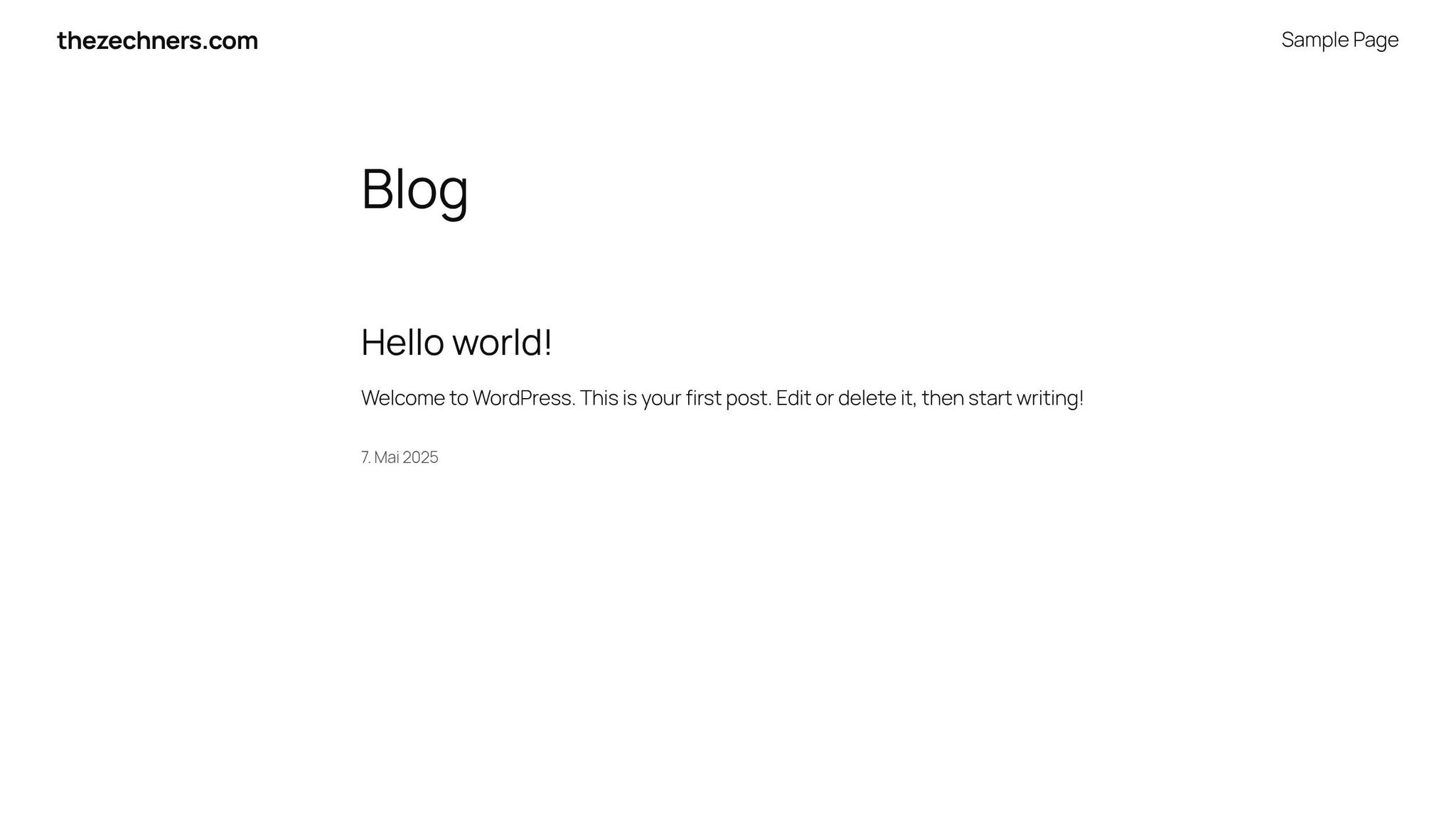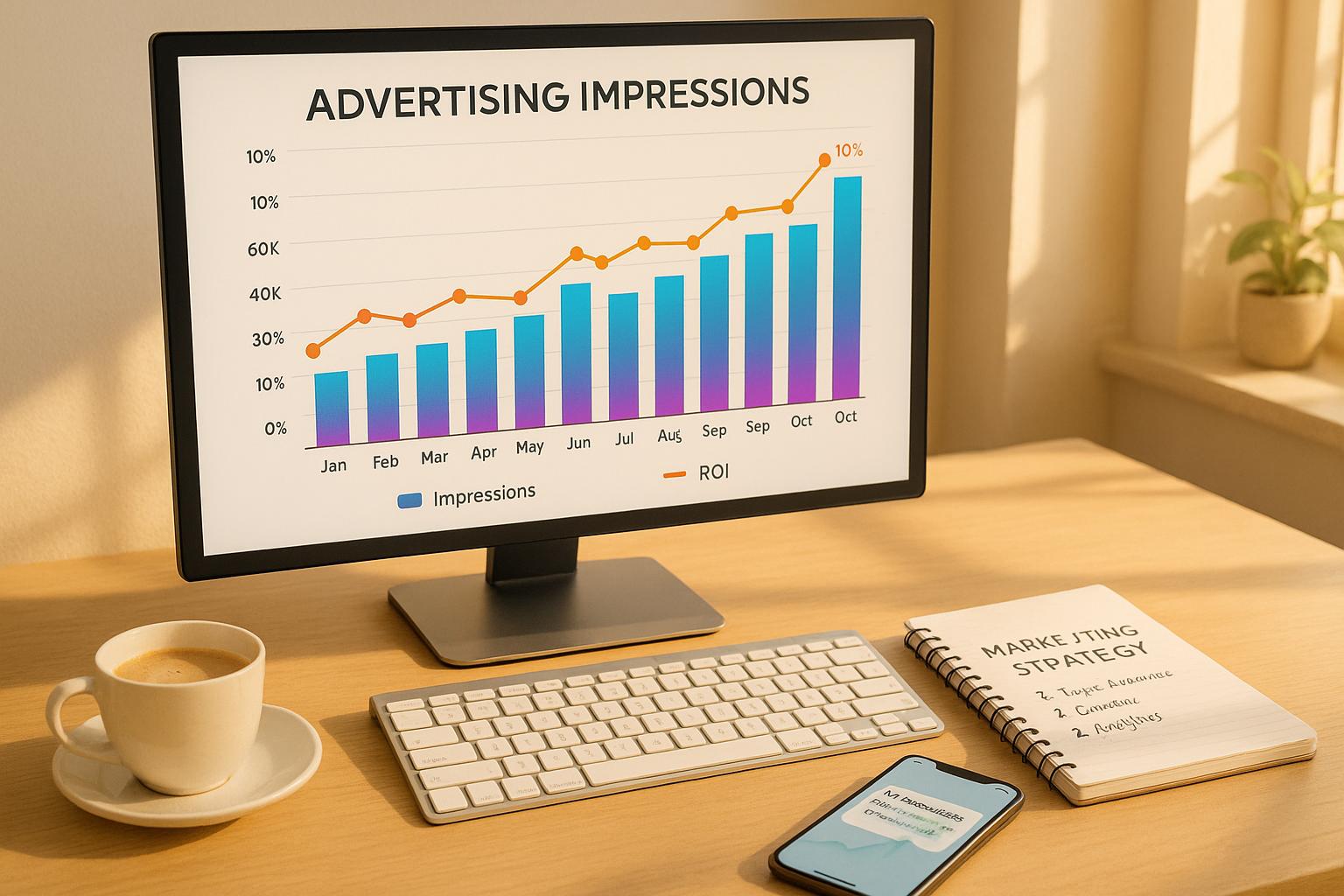Impression-based advertising focuses on how many times an ad is displayed, aiming to build brand awareness rather than driving immediate clicks. Instead of paying per click, advertisers use Cost Per Thousand Impressions (CPM) to measure visibility. Here’s what you need to know:
- What is an Impression? Each time an ad is displayed and visible (at least 50% for 1 second), it counts as an impression.
- Why It Matters: Repeated exposure helps consumers recognize your brand, influencing future buying decisions.
- Key Metrics: CPM (cost efficiency), CTR (engagement), and Viewable Impressions (visibility).
For example, targeted campaigns can boost click-through rates by 35% and conversions by 20%, proving that visibility can lead to measurable results. Platforms like Facebook, YouTube, and LinkedIn offer unique opportunities to reach specific audiences. To succeed, focus on clear goals, compelling ad design, and regular performance tracking.
Building Strong Impression-Based Campaigns
Platform Selection and Audience Targeting
Adam Arkfeld highlights three essential questions to guide your campaign strategy: Who is your audience? What product are you promoting? What resources do you have for marketing?
Different platforms cater to specific goals and audiences. Here’s a quick breakdown:
| Platform | Monthly Active Users | Ideal Use Case |
|---|---|---|
| 4 billion | Reaching B2C audiences for brand awareness | |
| YouTube | 2.7 billion | Engaging through video content |
| 1.3 billion | Showcasing products visually | |
| 1 billion | Connecting with B2B audiences | |
| TikTok | 1.7 billion | Capturing younger demographics |
Targeted ads are especially effective. They can achieve a 5.3x higher click-through rate compared to non-targeted ads. Plus, 37% of social media users have made purchases directly through targeted campaigns.
Ad Design Best Practices
To make an impact, your ads need to grab attention fast – considering the average attention span is just 8 seconds. Here are a few tips:
- Visual Hierarchy: Arrange elements to naturally guide the viewer’s eyes.
- Color Psychology: Use bold, appealing colors to evoke emotions that align with your message.
- Clear Call-to-Action (CTA): Personalized CTAs can perform 202% better than generic ones.
Once your ads are polished, focus on managing how often people see them to avoid overexposure.
Managing Ad Frequency
Striking the right balance with ad frequency is key to keeping your audience engaged without overwhelming them. Use these tactics:
- Custom Audience Segmentation: Group your audience based on engagement levels to control how often they see your ads.
- Ad Scheduling: Plan your ads to appear consistently but not excessively, ensuring steady exposure without causing fatigue.
What Is CPM? Marketing and Advertising CPM Explained For Beginners
Performance Tracking Methods
Track important metrics to evaluate how well your impression-based advertising campaigns are performing. Let’s dive into the key methods for doing this effectively.
Key Performance Metrics
| Metric | Industry Benchmark |
|---|---|
| Served Impressions | 50,000–500,000 per campaign |
| Viewable Impressions | 20–30% of served impressions |
| Click-Through Rate (CTR) | 0.5–2% average |
| Cost Per Thousand (CPM) | $2–$6 depending on platform |
"Ad impressions are a great way to gauge the reach and visibility of our campaigns. By tracking impressions, we can assess whether our ads are getting in front of the right audiences at scale. They’re especially useful for upper-funnel goals, such as brand awareness and driving initial interest." – Jared Silverman, Senior Director of Paid Search at NP Digital
These metrics are essential for calculating campaign ROI and assessing overall performance.
Calculating ROI
A good ROI benchmark is considered to be 5:1 – $5 in revenue for every $1 spent. Here’s how to measure ROI accurately:
- Track Total Investment
Add up all campaign-related costs, including ad spend, creative development, and management fees. - Measure Revenue Impact
Monitor sales growth during the campaign period while separating ad-driven revenue from organic growth. - Attribution Analysis
Use attribution models to identify which touchpoints are driving conversions.
These steps ensure a clear understanding of how your investment translates into returns.
Turning Data Into Insights
Campaign data can reveal opportunities for improvement when analyzed carefully. Here’s how to interpret and act on your results:
Platform-Specific Performance
Analyzing performance by platform can uncover optimization opportunities:
- Social Media Campaigns: Typically achieve 100,000 to 1 million impressions.
- Email Marketing: Generates 20,000 to 50,000 impressions per 10,000 subscribers.
- Display Ads: Can range from 200,000 to over 1 million impressions.
Identifying Optimization Needs
- Low impressions or viewability rates may point to targeting problems or ineffective ad creative.
- High impressions paired with a low cost per impression can indicate strong brand awareness efforts.
Leverage tools like Google Analytics and Facebook Ads Manager to track and analyze these metrics consistently. Regular monitoring helps you make quick adjustments, improve campaign results, and maximize ROI. With these insights, you can refine your strategies for even better outcomes.
sbb-itb-3726a71
Advanced ROI Optimization
Predictive Analysis with thezechners – Propensity Engine

The thezechners – Propensity Engine leverages advanced analytics to examine campaign data, pinpoint valuable audience segments, and fine-tune ad placements. This approach ensures more precise targeting and better returns on investment (ROI).
Key features include:
- Real-time performance tracking to keep campaigns on course
- Custom audience propensity scoring for identifying high-value prospects
- Dynamic budget allocation recommendations to maximize spend efficiency
- Automated campaign optimization signals for smarter adjustments
Budget Management Techniques
Effective budget management plays a critical role in boosting ROI. Consider these strategies:
| Budget Strategy | How It Works | Benefits |
|---|---|---|
| Performance-Based Allocation | Shift your budget toward the best-performing channels based on ongoing analysis. | Higher ROI overall |
| Agile Distribution | Regularly adjust budgets using real-time performance insights. | Increased flexibility |
| Channel Diversification | Use A/B testing across various platforms to spread risk. | Broader reach, lower risk |
Once your budget is optimized, focus on refining ad delivery to maintain audience interest and avoid fatigue.
Ad Rotation Strategies
After fine-tuning your budget, rotating ads effectively can help sustain campaign performance.
Frequency Optimization
- Set frequency caps to balance ad exposure with audience tolerance.
- Regularly update creative elements to keep content engaging.
- Continuously monitor engagement metrics to spot early signs of ad fatigue.
Creative Variation Testing
Experiment with multiple ad versions that incorporate different creative components, such as:
- Visual designs
- Headlines
- Call-to-action phrases
- Messaging approaches
Testing these variations helps identify the creative elements that drive the best results.
Performance Monitoring Framework
To measure how well your ad rotation strategy is working, keep an eye on these metrics:
- Changes in click-through rates over time
- Conversion rates compared to impressions
- Audience engagement trends
- Shifts in cost per acquisition
This data-driven approach ensures your campaigns stay effective and engaging.
Conclusion: Making Impression Ads Work
Key Takeaways
Research highlights that 81% of retail shoppers research online before making a purchase. This emphasizes the need for strong ad visibility early in the customer journey.
Here’s what successful advertisers focus on:
Campaign Basics
- Ad impressions show potential exposure but don’t confirm engagement.
- CPM campaigns are generally more affordable than CPC campaigns, but they require careful management.
- Combine impression data with engagement metrics for a complete performance picture.
Improving Performance
- Track both served and viewable impressions to measure your campaign’s actual reach.
- Assess impression quality by analyzing engagement rates and conversion data.
Use these insights to shape your campaign strategy effectively.
Steps to Launch Successful Campaigns
To create impactful impression-based campaigns, follow these steps:
- Define Clear Goals
Establish objectives and KPIs that match your business priorities, whether it’s raising brand awareness or driving specific actions. - Use Targeting Strategically
Identify high-intent keywords, segment your audience precisely, and choose the best ad placements and timing for maximum impact. - Track and Refine
Keep an eye on critical metrics like impression volume, engagement rates, CPM, and ROI, and make adjustments as needed.
FAQs
What’s the difference between impression-based and click-based advertising, and which is more cost-effective?
Impression-based advertising focuses on how many times your ad is displayed, making it ideal for boosting brand visibility and reaching a broad audience. On the other hand, click-based advertising measures user engagement, aiming to drive specific actions like clicks, leads, or sales.
The cost structure differs between the two. Impression-based campaigns use CPM (Cost Per Thousand Impressions), which can be more cost-effective for increasing awareness across a large audience. Click-based campaigns use CPC (Cost Per Click), where costs are tied directly to user interactions. The best choice depends on your marketing goals – use impressions to build awareness and clicks to drive conversions.
How can I optimize ad frequency to prevent audience fatigue in impression-based advertising?
To prevent audience fatigue in impression-based advertising, consider these key strategies:
- Set frequency caps: Limit how often your ads are shown to the same person to avoid overexposure and maintain engagement.
- Rotate creative assets: Regularly update and diversify your ad creatives to keep your messaging fresh and interesting.
- Segment your audience: Tailor frequency caps and ad content to specific audience groups based on their preferences and behaviors.
By balancing visibility with relevance, these strategies help maintain audience interest and improve the overall effectiveness of your campaigns.
How can businesses effectively measure the ROI of impression-based advertising?
To measure the ROI of impression-based advertising, businesses should focus on key performance metrics such as Cost Per Thousand Impressions (CPM), click-through rate (CTR), and conversion rate. These metrics help assess the efficiency of ad spend and the impact on consumer engagement.
Additionally, tracking revenue generated, customer acquisition cost (CAC), and cost per lead (CPL) provides valuable insights into how well campaigns convert impressions into tangible results. By consistently analyzing these metrics, businesses can make data-driven decisions to optimize their ad placements and maximize returns.
